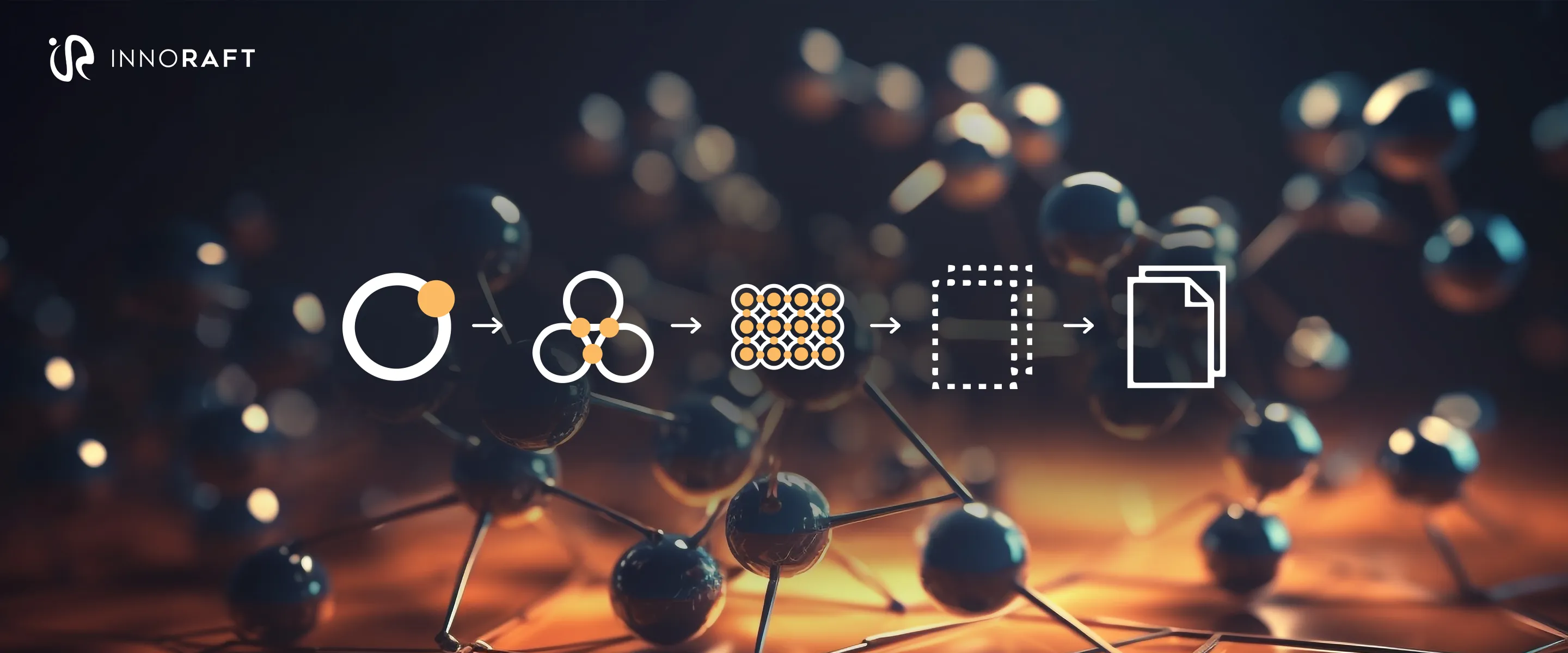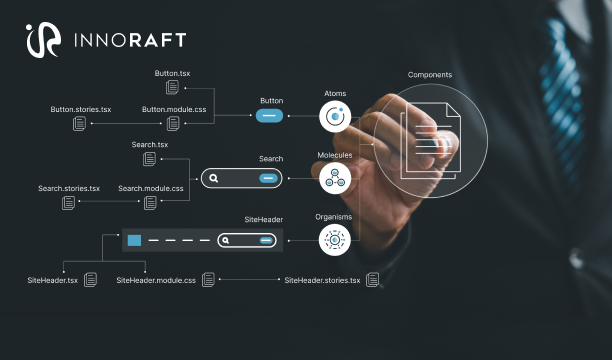Once considered the Wild West, the online world has transformed significantly, with the most notable change in how businesses today approach web and UI design for their websites. Early websites did not follow any structured design, used ad-hoc methods, and unrefined best practices. Eventually, due to factors like the emergence of new devices, the establishment of W3C, and rising challenges related to consistency, efficiency, and collaboration, businesses had to abandon the devil-may-care attitude towards web and UI design and adopt a well-defined and structured design methodologies and systems.
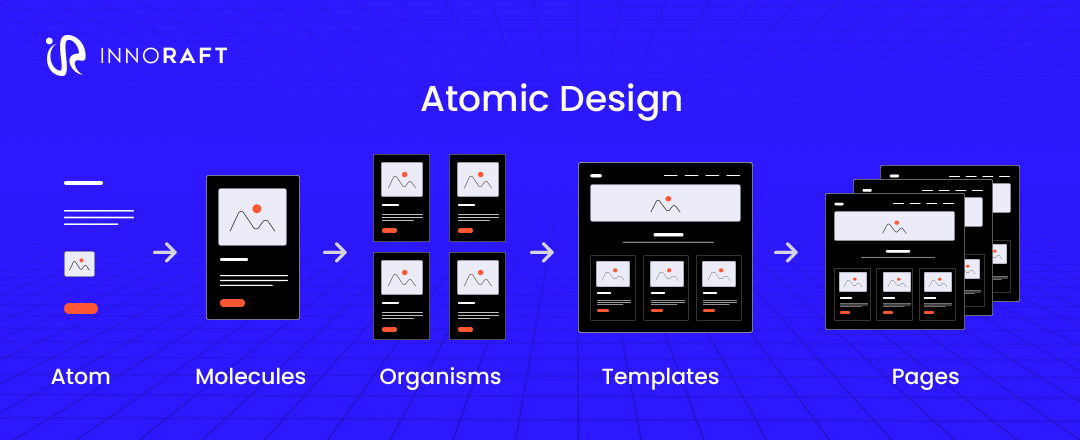
Introduced in 2013 by Brad Frost, Atomic Design methodology is one of the most notable design systems. Taking inspiration from the atomic bonds found in everything in nature, Brad Frost redefined every UI as a combination of different atoms, molecules, organisms, templates, and pages. Considered to be one of the more powerful design methodologies, atomic design can be the answer to your UI design struggles.
Let's examine this methodology closely to understand if it is the right choice for you!
Understanding the Building Blocks of Atomic Design
Rooted in chemistry's hierarchical models, Atomic Design principles bring structure and clarity to the process of crafting interfaces into smaller, reusable components—starting from the most fundamental building blocks and progressing toward full pages. This approach fosters consistency across digital products but also encourages scalability and maintainability. At its core, atomic design consists of five distinct stages.
Atoms
Atoms are the basic building blocks of an interface. They are the HTML elements that can't be broken down further without losing their functional meaning—think of elements like form inputs, buttons, labels, and icons. This first element of Atomic Design is abstract in isolation but can be the foundation for more complex components.
Example: A <button>, a color swatch, or a font style.
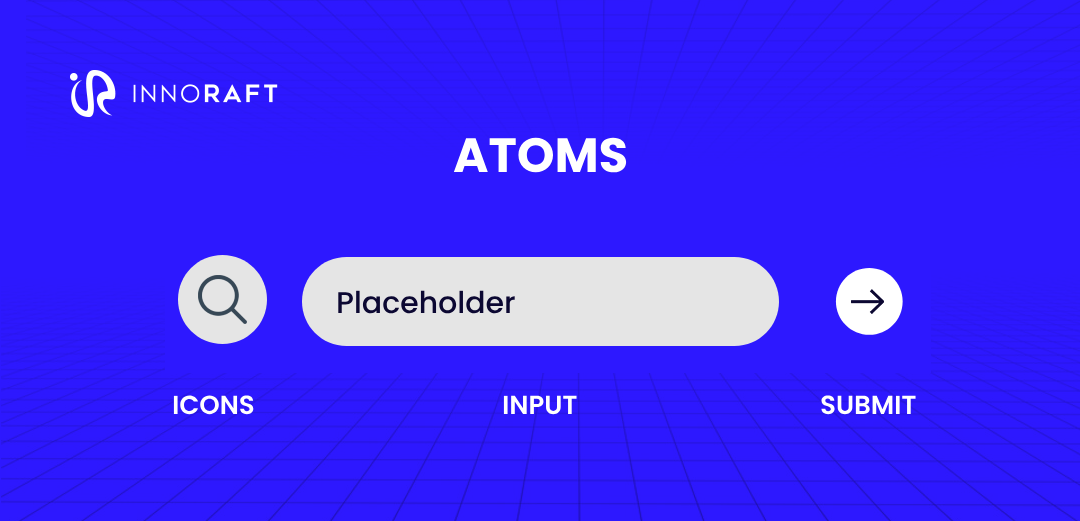
Molecules
Molecules are simple groups of atoms functioning together as a unit. They combine to form a functional component that encapsulates a specific behavior. Molecules are usually more tangible than atoms, serving as the first level at which the user interacts with the UI.
Example: a search bar with an input field (atom) and a submit button (atom).
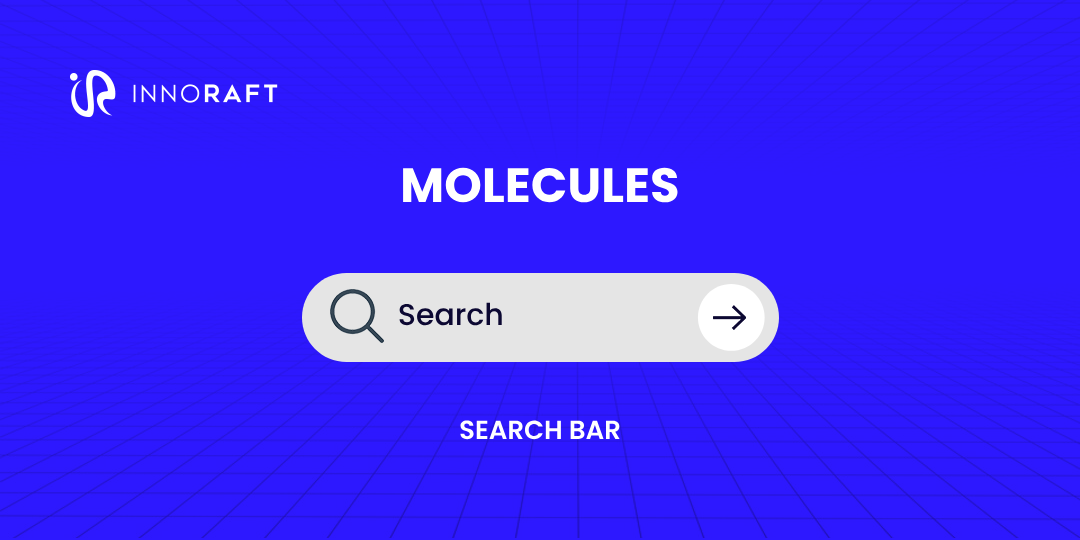
Organisms
In the Atomic Design methodology, Organisms are relatively complex UI components comprising groups of molecules and/or atoms. These form standalone sections of an interface, often defining distinct regions of a page. Organisms begin to introduce layout and structure.
Example: A website header with a logo, navigation menu, and search form.
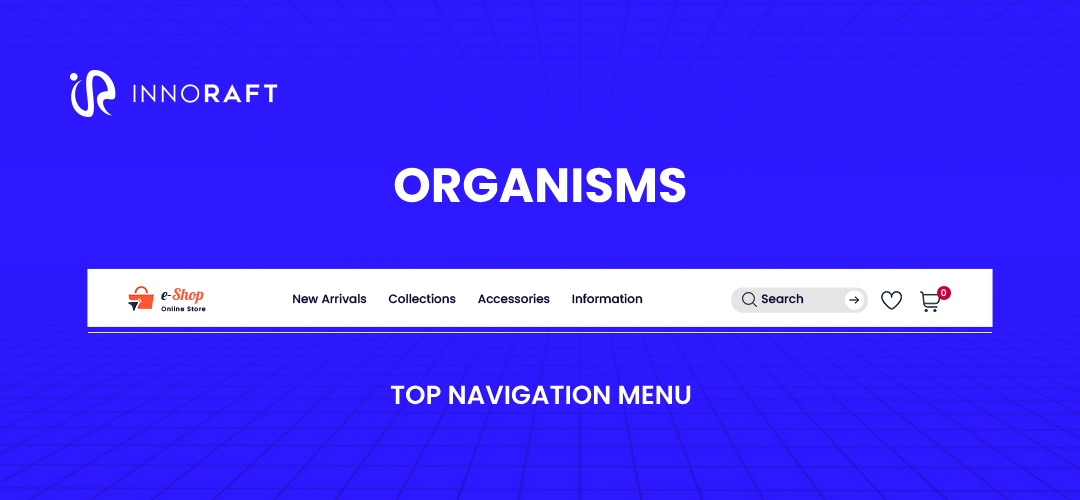
Templates
Templates are page-level objects that combine organisms to form the structure of a web page. While they don't use real content, they lay out where components go and how they relate to each other. Templates provide a bird's-eye view of the design system in action.
Example: a blog post layout template that defines the position for the title, content sidebar, and footer.
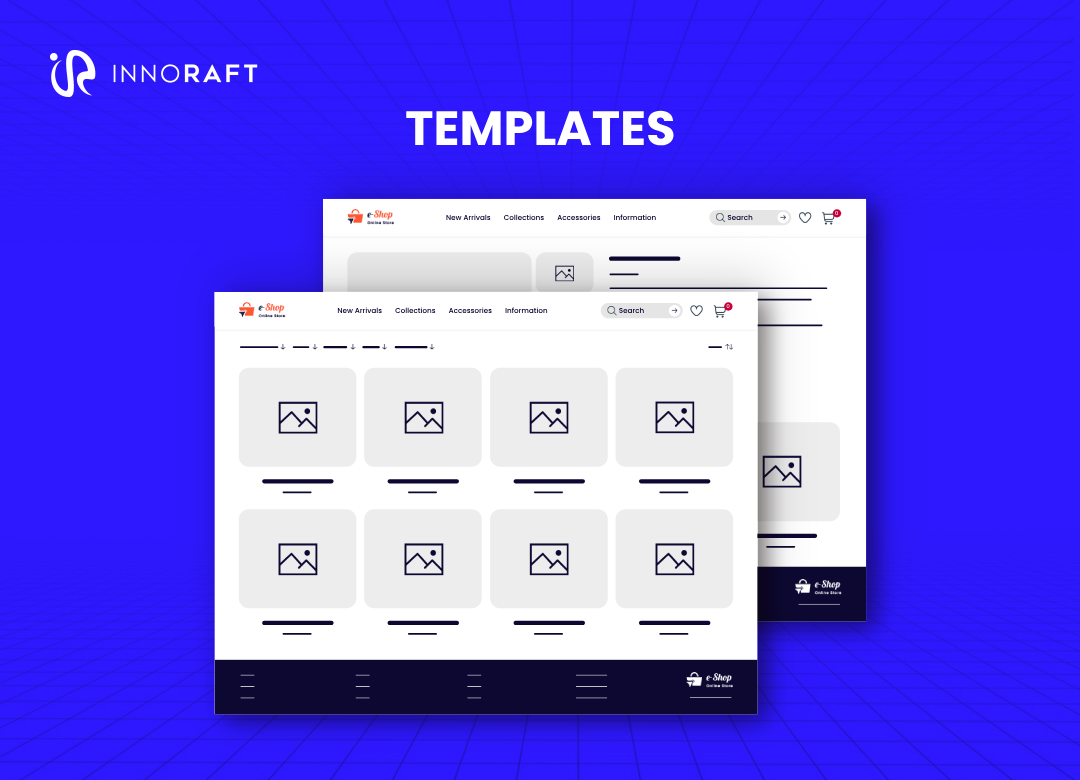
Pages
Pages are specific instances of templates that include real, representative content. This is where atoms, molecules, organisms in UI design and content come together. Pages are essential for testing the effectiveness and flexibility of your design system, helping ensure that all components behave well with real-world content.
Example: a published blog post with the title Understanding Atomic Design, a featured image, the article text, and related posts in the sidebar.
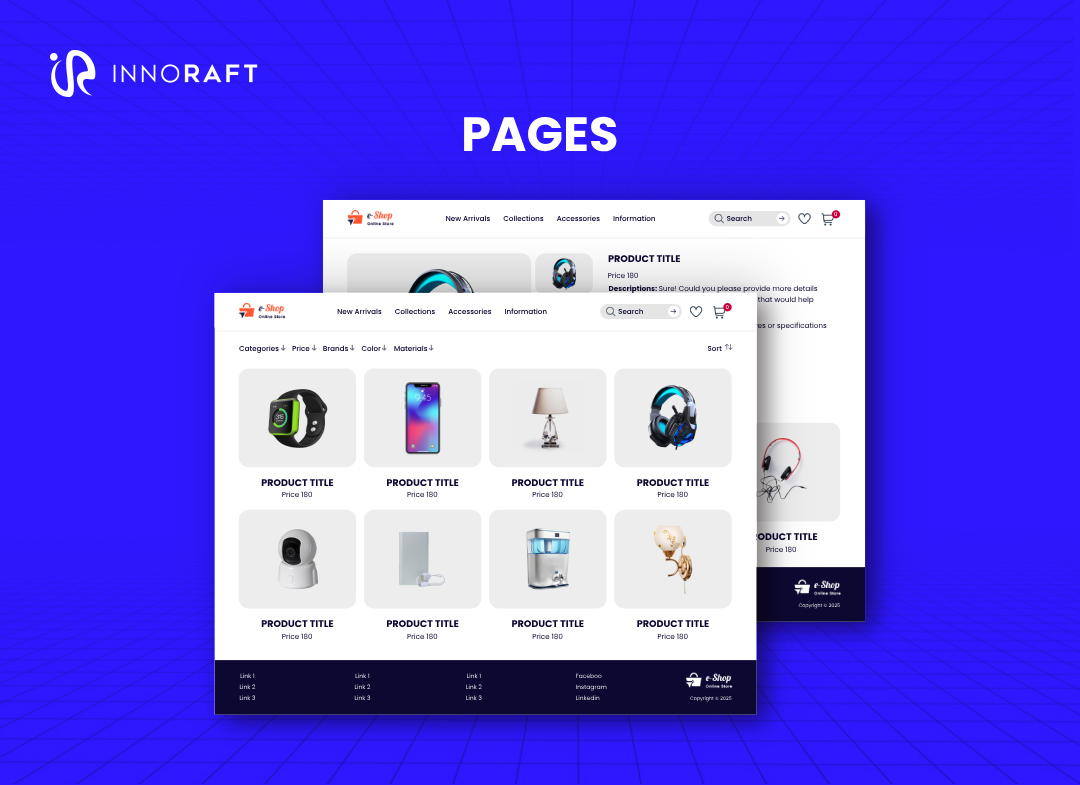
Benefits and Challenges of Atomic Design
Similar to any methodology, Atomic Design methodology has unique advantages and hurdles. Understanding both sides of the coin is essential for teams deciding whether to adopt it into their design and development workflow.
Benefits of Atomic Design
Consistency Across UI
One of the most notable benefits of Atomic design is consistency across the UI. Through the development of reusable UI components in Atomic Design, you can maintain visual and functional consistency across a product, reducing design drift, and ensuring a cohesive user experience.
Scalability and Maintainability
Because designs are built from the ground up using smaller reusable elements, updating a single atom or molecule (like a color or input field style) automatically reflects across all higher-level components. This modular structure simplifies scaling and long-term maintenance of component-based design systems.
Collaboration Between Teams
By breaking down interfaces into hierarchical components with Atomic design methodology, designers, developers, and production managers can speak a common language. This shared understanding streamlines collaboration and speeds up development cycles.
Easier Testing and Quality Assurance
Atomic components can be tested individually (unit testing) before being assembled into more complex structures. This makes bugs easier to trace and fix early in the process, leading to more stable end products.
Faster Prototyping and Development
Once a library of atoms, molecules, organisms in UI design is established, designers and developers can rapidly compose interfaces without starting from scratch. This leads to increased productivity and quick iteration cycles.
The Challenges of Atomic Design
Steep Learning Curve
Atomic Design methodology introduces a new way of thinking that can be unintuitive at first, especially for teams used to working on full pages or features. Learning how to deconstruct and categorize interface elements requires time and a mental shift.
Overhead in Setup And Maintenance
Creating and managing a well-structured component library can be resource-intensive. It demands upfront planning, ongoing documentation, and regular maintenance to prevent fragmentation or redundancy in the system.
Rigidity in Some Use Cases
Atomic Design principles promote a strict hierarchy. While this structure helps with consistency, it can sometimes become a constraint when designing more experimental or non-standard interfaces. Adapting systems to fit every edge case can become cumbersome.
Risk of Over-Engineering
There's a tendency to over-componentize, especially early on. Not every visual element needs to be an individual atom or molecule. Excessive fragmentation can lead to an overly complex system that's difficult to navigate or update.
Tooling and Integration Issues
Integrating Atomic Design system into existing toolchains or frameworks (like React, Vue, or Storybook) isn't always straightforward. Some design tools may not natively support this methodology, requiring workarounds or custom setups.
How to Implement Atomic Design?
Here's a step-by-step approach to implementing Atomic Design principles for your digital product
Define the Atoms
Leveraging the atomic design methodology begins with identifying the Atoms. You need to clearly define the smallest elements of your design that will act as the building blocks. Elements include buttons, input fields, icons, and typography. These smaller elements will structure everything else on your user interface, so keep them well-organized, simple, consistent, and reusable.
Bring Atoms Together to Form Molecules
Once your atoms are defined, combine them to create molecules—i.e., small groups of components that work as a unit. For example, features like a search bar are molecules comprising multiple stops, such as an input field, a button, and an icon. When creating molecules, focus on how multiple atoms interact to create functionality.
Build Organisms from Molecules
Once you have created molecules, you can get started on developing organisms. The third stage of the Atomic Design system, organisms are larger, more complex components consisting of multiple atoms and molecules, all coming together to provide a functional experience to the users. Think of a website header that can combine the business logo (atom), Navigation menu (molecule), and a search bar (molecule).
Create Templates for Structure
You can use your organisms to create design templates once your organisms are ready. These are the skeletons of your pages, demonstrating where the content and other components will go. Templates focus on the layout and hierarchy of design elements rather than the specific content, giving you the layout of the overall pages.
Develop Pages with Real Content
After creating your templates, you can finally bring them to life by adding content. Replace the placeholders with real content (images, texts, and data) to create fully functional pages. This is where user testing and feedback come into play, allowing you to refine and reiterate.
Document Everything
While you build UI using Atomic Design methodology, document your components, styles, and patterns. A well-documented design system becomes a shared resource for your team, guaranteeing consistency and making future prospects easier to tackle.
Is Atomic Design the Right Choice for Your Digital Product?
The clarity and structure Atomic design brings to the UI design process are unmatched, making it a popular choice of methodology for businesses across industries. However, adopting Atomic Design principles isn't just a matter of preference—it is a strategic decision based on the nature, scale, and goals of your digital product. Consider the following factors to determine whether atomic design is the right fit.
Complexity and Scale of the UI
Atomic design shines in complex component-based design systems where components are reused across multiple pages, products, or teams. If your application involves many screens, interactions, or stakeholders, breaking the UI into atoms, molecules, organisms, templates, and pages helps ensure scalability and consistency. To determine the complexity and scale of your digital product, you can ask the following questions:
- Are there many similar UI patterns across your product?
- Will components need to be reused or repurposed in different contexts?
- Do you anticipate the product growing significantly in scope?
If the answer is yes, Atomic Design can offer a much-needed framework for maintaining order and efficiency.
Team Collaboration and Workflow
Atomic Design system supports a shared language and structured approach that enhances collaboration between designers, developers, and stakeholders. This is especially useful in cross-functional teams working in parallel. Ask yourself:
- Is your team struggling with inconsistent component naming or redundant design elements?
- Do developers often recreate components that already exist elsewhere?
- Do you use tools like Storybook, Figma components, or design tokens?
Atomic design can be a strong foundation if your team needs a clearer handoff between design and development or better documentation.
Longevity and Maintainability
Products with long lifespans - like SaaS platforms, internal enterprise tools, or evolving consumer applications - benefit from design systems that are easy to maintain and update. Atomic design helps build a flexible yet robust foundation for iterative improvements. Ask yourself:
- Will the product be actively maintained or updated for years?
- Do you foresee frequent UI/UX updates?
- Will new features often be added, requiring design consistency?
In such cases, a component-driven architecture like atomic design prevents design and code-bloat over time.
Tooling and Process Readiness
Adopting Atomic Design methodology requires a degree of process maturity. While not tool-dependent, it works best when supported by a thoughtful design system and integrated with development tools that enable componentization.
- Does your team already use design systems or component libraries?
- Are you familiar with front-end frameworks that support modular design (like React, Vue, or Angular)?
- Can you invest time creating a pattern library or designing a token system?
If not, you may need to lay some groundwork first. Atomic design is powerful, but implementing it without foundational processes can lead to frustration.
When Atomic Design Might Not Be Ideal?
While atomic design offers many benefits, it's not always necessary. The added complexity of creating a whole design system might outweigh the benefits for smaller projects, marketing microsites, or static one-off pages.
If your project is
- Short-lived or single-purpose
- Built by a solo designer/developer
- Not expected to evolve or scale
...then a traditional linear design approach may be faster and more appropriate.
Atomic design is not a one-size-fits-all solution. It's a philosophy best suited for teams and products that prioritize scalability, consistency, and long-term growth. By carefully evaluating your product's scope, your team's workflow, and your readiness for structured design systems, you can determine if this approach will elevate your process or unnecessarily complicate it.
Wrapping Up: Embrace Atomic Design with Intention
Atomic design is a thoughtful methodology that brings order to the chaos of modern interface design. By breaking down UIs into hierarchical, reusable components, teams gain a more transparent structure, improved collaboration, and greater consistency across digital products. Whether building a scalable SaaS platform or managing a growing design team, Atomic Design system can provide the foundation for long-term efficiency and maintainability.
However, much like any other framework, its power lies in how and when it is applied. Not every project requires the overhead of a full atomic system, and not every team is ready to adopt its philosophy immediately. The key is assessing your product's complexity, your team's workflows, and long-term goals. When approached with the right mindset and preparation, atomic design can transform your UI and how your team thinks about and builds digital experiences.
In a digital world that demands speed, consistency, and flexibility, Atomic Design in UI design offers a compelling path forward. Use it with intention, which might become the cornerstone of your design system's success.
